
Willie Nelson
country
Support www.hipchristmas.com! Shop at Amazon, Apple Music, and more...
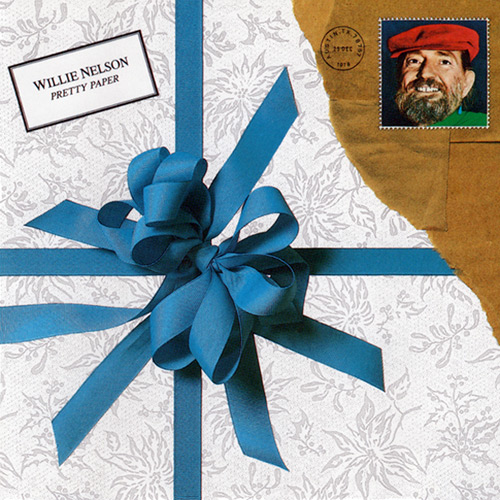 Long
before he was "The Red Headed Stranger," famous Texan Willie
Nelson was knocking out tunes on Music Row in Nashville, Tennessee. Nelson wrote
the title song to his inaugural holiday album, Pretty
Paper (Columbia, 1979), way back in 1963 for rocker
Roy Orbison, who took it all the way to #15 on the pop charts. Willie himself recorded
the song in 1964, releasing it as a single on RCA. Nelson's version is essentially
a countrified interpretation of the arrangement that Orbison recorded a year
earlier. But where Orbison approached the song with his trademark melodrama, in Nelson's hands
"Pretty Paper" is a classic country weeper - the story of a lonely (probably
drunk, possibly homeless) man, set during Christmas. "He sits all alone
on the sidewalk,"
observes Willie, "hoping that you won't pass him by." But we are much
too busy to notice the poor wretch, too busy buying Christmas presents wrapped with pretty paper. "In the midst of the laughter he cries," Willie warbles
as the curtain falls, leaving his protagonist's fate unresolved.
Long
before he was "The Red Headed Stranger," famous Texan Willie
Nelson was knocking out tunes on Music Row in Nashville, Tennessee. Nelson wrote
the title song to his inaugural holiday album, Pretty
Paper (Columbia, 1979), way back in 1963 for rocker
Roy Orbison, who took it all the way to #15 on the pop charts. Willie himself recorded
the song in 1964, releasing it as a single on RCA. Nelson's version is essentially
a countrified interpretation of the arrangement that Orbison recorded a year
earlier. But where Orbison approached the song with his trademark melodrama, in Nelson's hands
"Pretty Paper" is a classic country weeper - the story of a lonely (probably
drunk, possibly homeless) man, set during Christmas. "He sits all alone
on the sidewalk,"
observes Willie, "hoping that you won't pass him by." But we are much
too busy to notice the poor wretch, too busy buying Christmas presents wrapped with pretty paper. "In the midst of the laughter he cries," Willie warbles
as the curtain falls, leaving his protagonist's fate unresolved.
"Pretty Paper" became a holiday standard, covered by artists as diverse as Glen Campbell (1968), Mickey Gilley (1976), Freddy Fender (1977), Carly Simon (2002), Chris Isaak (2004), Reverend Horton Heat (2005), and Asleep at the Wheel (2007). Willie's 1964 version, by the way, isn't easy to come by, though it appears on Rhino's Hillbilly Holiday compilation. Its b-side, however, is even tougher. "What A Merry Christmas This Could Be" was written by noted Nashville tunesmiths Harlan Howard and Hank Cochran, and Nelson never recorded it again (though Ray Price and George Strait did). Both "Pretty Paper" and its flipside appear on Bear Family's boxed set survey of Willie's early years, Nashville Was The Roughest - for a hefty price tag.
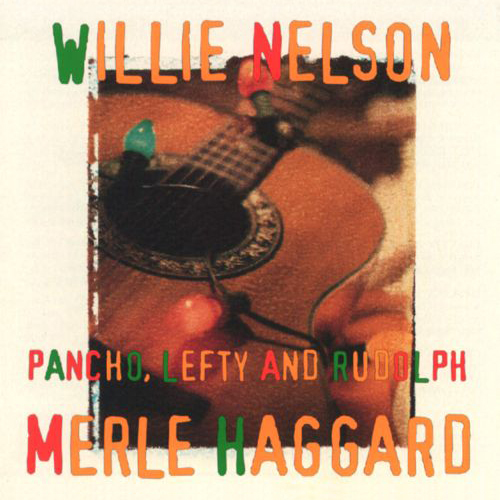 Anyway,
while Willie's 1964 edition of "Pretty Paper" is fine, I think the definitive
version is the solemn rendition he waxed for the Pretty
Paper LP, produced by Booker T. Jones (of Booker
T. & The MG's). Nelson and Jones had already worked together on Stardust (1978),
a collection of Tin Pan Alley standards, and Pretty
Paper fits within the same dignified, spare template Jones designed for the earlier
album.
The title track, certainly, and several others - especially "White Christmas" and "Silent
Night" -
are well served by the austere arrangements. Often featuring little more than Booker's gentle
Hammond organ and Willie's signature nylon-string guitar, these quiet songs are the emotional heart of the record. And, set in stark relief, they make Willie's jaunty takes on "Blue Christmas" and "Frosty The Snowman" even more fun.
Anyway,
while Willie's 1964 edition of "Pretty Paper" is fine, I think the definitive
version is the solemn rendition he waxed for the Pretty
Paper LP, produced by Booker T. Jones (of Booker
T. & The MG's). Nelson and Jones had already worked together on Stardust (1978),
a collection of Tin Pan Alley standards, and Pretty
Paper fits within the same dignified, spare template Jones designed for the earlier
album.
The title track, certainly, and several others - especially "White Christmas" and "Silent
Night" -
are well served by the austere arrangements. Often featuring little more than Booker's gentle
Hammond organ and Willie's signature nylon-string guitar, these quiet songs are the emotional heart of the record. And, set in stark relief, they make Willie's jaunty takes on "Blue Christmas" and "Frosty The Snowman" even more fun.
But, after a while, the Pretty Paper starts to drag. Weighed down by the usual holiday standards, Willie begins to sound rote and joyless - never a good sign on a Christmas album. Basically, I was expecting more than reverence and quietude from a legendary hell-raiser like Willie Nelson. I was hoping the closing number, "Christmas Blues," would redeem the album, but ultimately I was disappointed. It's an instrumental written by Nelson and Jones - and the only original song on the album other than the 25-year-old title track - but like much of Pretty Paper, it's pleasant but unexceptional.
So, can I recommend Pretty Paper? Sure, for Christmas junkies like me, and absolutely for Willie's immense, devoted following. But it could have and should have been a better, more engaging record. Incidentally, Legacy's 2012 release, The Classic Christmas Album, compiles all of Pretty Paper along with several other holiday-themed songs from Willie's vast catalog, making it a much better value than the original 30-minute edition.
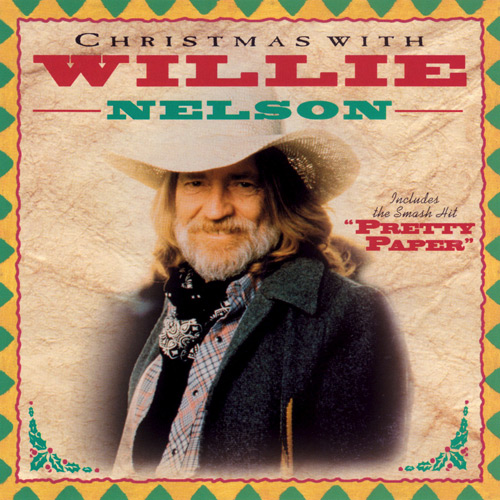 In 1984, Willie recorded another version of "Silent Night" (this one altogether
solo) for a series of local Austin charity albums (read
more), later reissued as The
Texas Christmas Collection (1991). Then, he contributed "Away In A Manger" to another charitable collection, The Stars Come Out For Christmas, Volume III (1991). Later, Columbia compiled Pancho,
Lefty, and Rudolph (1995) using tracks from both Nelson's Pretty
Paper and Merle Haggard's 1982 album, Goin'
Home For Christmas.
In 1984, Willie recorded another version of "Silent Night" (this one altogether
solo) for a series of local Austin charity albums (read
more), later reissued as The
Texas Christmas Collection (1991). Then, he contributed "Away In A Manger" to another charitable collection, The Stars Come Out For Christmas, Volume III (1991). Later, Columbia compiled Pancho,
Lefty, and Rudolph (1995) using tracks from both Nelson's Pretty
Paper and Merle Haggard's 1982 album, Goin'
Home For Christmas.
But, Willie Nelson didn't record an all-new holiday album until 1994, when he once again he cut a less-than-impressive record with a legendary producer. This time it was Larry Butler, who started his career in the 1960's as a session musician. His distinctive piano is featured on hits like Bobby Goldsboro's "Honey" and Conway Twitty "Hello Darlin'", and he served time with Ronny & The Daytonas ("GTO") and the Gentrys ("Keep On Dancin'") before moving into production.
The crown jewel in Larry Butler's career behind the boards was a string of massive hit albums in the 1970's for Kenny Rogers - which helps explain why Christmas With Willie Nelson (Regency, 1994) is such a bore. In comparison, Pretty Paper is a bona fide hoedown! According to its minimal liner notes, Christmas features members of Willie's regular band, including harmonica virtuoso Mickey Raphael, long-time drummer Paul English, and guitarist Jody Payne (formerly a member of Merle Haggard's band). But, most of the (mercifully meager) 10 tracks consist of little more than Willie's impassive voice and guitar accompanied by Larry Butler's keyboards.
When Butler sticks to piano, the results are tolerable, if uncompelling. When he starts to stack layers of generic, stultifying synthesizers on top, things go badly awry - ending up closer to easy listening music than country & western. Even worse, Christmas With Willie Nelson proceeds at a stubbornly funereal pace. With drab selections like "The First Noël," "Joy To The World," and "Silent Night" (which lasts an interminable seven minutes), that's hardly surprising. Pretty Paper, at least, had some playful songs like "Rudolph The Red-Nosed Reindeer" and "Here Comes Santa Claus." But, on Christmas With Willie Nelson, even the inevitable reprise of "Pretty Paper" fails to spark Willie's interest - let alone that of the audience. And, it's easily the best thing on the album!
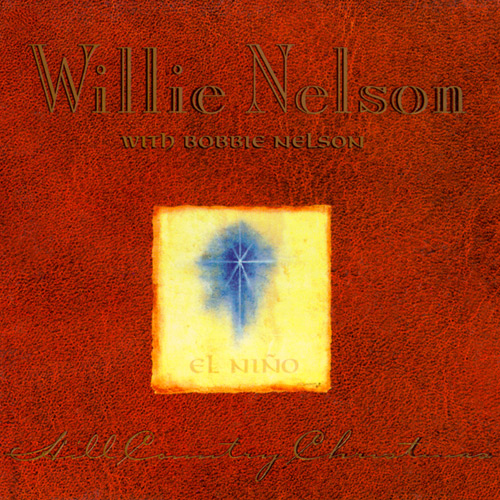 The simple truth is that as
Willie aged, his artistic output grew wildly unpredictable, vacillating
between brilliantly innovative (Spirit,
1996), utterly unexpected (Countryman, 2005) and casually indifferent (The
Great Divide, 2002). Christmas With Willie Nelson is at the terminal end of that indifference, and one gets the impression that it was recorded as a favor to an old friend. In that light, Nelson's next Christmas album would fare better - though marginally so.
The simple truth is that as
Willie aged, his artistic output grew wildly unpredictable, vacillating
between brilliantly innovative (Spirit,
1996), utterly unexpected (Countryman, 2005) and casually indifferent (The
Great Divide, 2002). Christmas With Willie Nelson is at the terminal end of that indifference, and one gets the impression that it was recorded as a favor to an old friend. In that light, Nelson's next Christmas album would fare better - though marginally so.
Hill Country Christmas (Finer Arts, 1997) is family affair, a collaboration of sorts with his piano-playing older sister, Bobbie, produced by Nelson and Freddy Fletcher at Willie's own Pedernales Studio. As such, it has a warm, casual, and distinctly Southwestern flavor - which ends up being both the strength and the weakness of Hill Country Christmas. Most impressively, it is bookended by vocal and instrumental versions of Willie's lovely, Latin-tinged original song "El Niño," a dramatic religious parable that demonstrates the sort of epic scope Nelson can achieve when he's really trying. On the other hand, much of the album sounds like a home recording - just Willie and Bobbie poking around a predictable batch of holiday favorites, nearly all of which Willie had recorded at least once before.
I'm sure this approach was meant to convey Willie and Bobbie's familial bond and shared sense of musicality, but the end result is often half-assed and out-of-tune (cf. "Deck The Halls"). Most astonishing is "Here Comes Santa Claus," which consists of Willie singing along (poorly) with an old Gene Autry recording of the song. Not even (yet another) version of "Pretty Paper" - nicely performed by Willie, accompanied only by his guitar - can save the day. So, while Hill Country Christmas sounds much more "Willie" than Christmas With Willie Nelson, it's still a purchase only serious fans will appreciate.
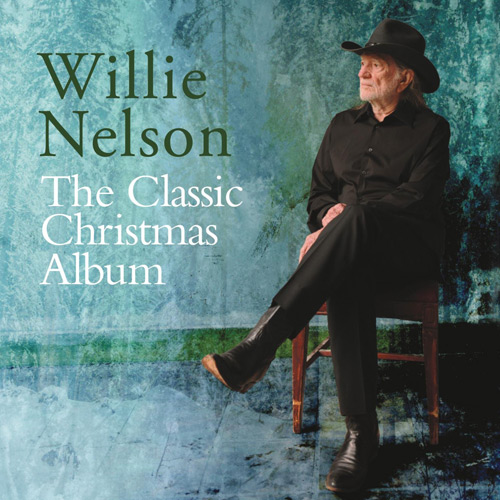 The same year, Nelson pitched in on a couple of tracks from Asleep At The Wheel's Merry Texas Christmas Y'all ("Pretty Paper" and "Silent Night"). But, over the subsequent decades, Willie has largely stayed home for Christmas, recording
just a few more songs for isolated projects. The first is a spirited version of Charles
Brown's blues standard "Please Come For Christmas" for A
Very Special Acoustic Christmas in 2003 (read
more). The second is a cover of John Prine's "Christmas In Prison," recorded with alternative country icon Ryan Adams as an iTunes exclusive bonus track for Willie's 2006 album Songbird, but later released as a digital single. The third is a duet with Norah Jones on "Baby It's Cold Outside" from his own American Classic (2009), and it's just as charming as you'd expect.
The same year, Nelson pitched in on a couple of tracks from Asleep At The Wheel's Merry Texas Christmas Y'all ("Pretty Paper" and "Silent Night"). But, over the subsequent decades, Willie has largely stayed home for Christmas, recording
just a few more songs for isolated projects. The first is a spirited version of Charles
Brown's blues standard "Please Come For Christmas" for A
Very Special Acoustic Christmas in 2003 (read
more). The second is a cover of John Prine's "Christmas In Prison," recorded with alternative country icon Ryan Adams as an iTunes exclusive bonus track for Willie's 2006 album Songbird, but later released as a digital single. The third is a duet with Norah Jones on "Baby It's Cold Outside" from his own American Classic (2009), and it's just as charming as you'd expect.
Now, before wrapping up, we have to talk about the dizzying array of Willie Nelson holiday product on the market. Make no mistake, Willie has recorded just three formal Christmas albums - but they've been reissued dozens of times, with confusingly similar titles and many of the same songs scattered throughout. After way too much examination, I discovered that the various sessions are seldom, if ever, commingled, and you can figure out what you're buying by identifying the unique tracks.
- If the album has "Blue Christmas," "Rudolph," "Frosty," or "Santa Claus Is Coming To Town," those are the 1979 Pretty Paper recordings.
- If the album has "It Came Upon A Midnight Clear" or "We Wish You A Merry Christmas," those are the 1994 Christmas With Willie Nelson recordings.
- If the album has "El Niño" or "Hark! The Herald Angels Sing," those are the 1997 Hill Country Christmas recordings.
Having said that, be aware that later versions of Hill Country Christmas have one additional song ("The First Noël") and drastically remixed, arguably superior versions of "El Niño" and "Pretty Paper." The first and best example would be The Christmas Album (YMC, 2005), but there are several more to choose from. [top of page]
Selected Albums
- Pretty Paper (1979)
- Christmas With Willie Nelson (1994)
- Pancho, Lefty, and Rudolph (with Merle Haggard, 1995)
- Hill Country Christmas (with Bobbie Nelson, 1997)
- The Christmas Album (2005)
- The Classic Christmas Album (2012)
Essential Songs
- Baby It's Cold Outside (with Norah Jones, 2009)
- Blue Christmas (1979)
- Christmas In Prison (with Ryan Adams, 2006)
- El Niño (1997)
- Frosty The Snowman (1979)
- Please Come Home For Christmas (2003)
- Pretty Paper
- RCA version (1964)
- Columbia version (1979)
- Regency version (1994)
- Finer Arts version (1997)
- Silent Night (1979)
- What A Merry Christmas This Could Be (1964)
- White Christmas (1979)
Further Listening
- Christmas Time In The Valley (Freddy Fender, 1977)
- Hillbilly Holiday (various artists, 1988)
- The Texas Christmas Collection (various artists, 1991)
- A Very Special Acoustic Christmas (various artists, 2003)



